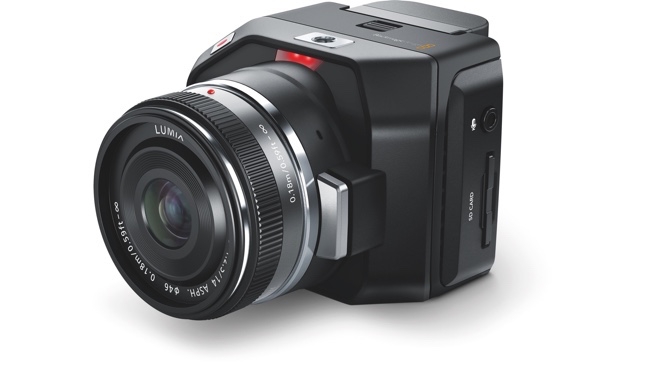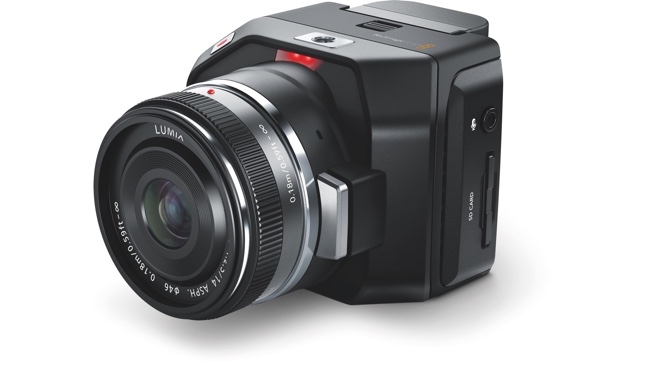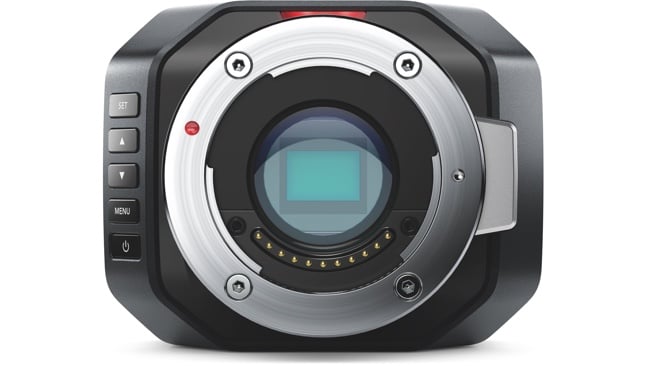
 The new Blackmagic Micro Cinema Camera: a lot to offer
The new Blackmagic Micro Cinema Camera: a lot to offer
We briefly covered the announcement of the new Blackmagic Micro Cinema and Micro Studio Cameras when they were launched. While they were perhaps overshadowed by the announcement of the URSA Mini, the units have a lot to offer.
The obvious use of the BMMCC would be as a stunt camera, to obtain shots where it might be difficult to use a larger camera. UAV usage would be another. Blackmagic has even seen fit to equip the camera with PWM and S.Bus connections to allow standard RC model controllers to remotely control aspects such as focus, iris, audio levels, as well as start/stop recording.
The promotional photos show the camera being used as a helmet camera, although its credentials as a true action cam remain to be seen because one of the crucial elements of such a camera, weatherproofing, is not mentioned. Certainly I cannot see this camera being used on my kayak without some form of housing! This could increase the overall size substantially.
Having said that, the fact that it has a global shutter up to 30fps, and a rolling shutter up to 60fps, as well as being capable of around 13 stops of dynamic range means that it should be possible to obtain some wonderful footage. They have even increased the ISO capability over previous cameras to 1600. Although of course the caveat is that we do not yet know what the noise performance is like.
There is one niggly limitation, however. The BMMCC is limited to a 1080 resolution, although it can record to ProRes or CinemaDNG RAW. In an ever increasing 4K world it may be slightly puzzling as to why BMD hasn’t gone all out for 4K across the range. Not least because it appears that one of the other cameras that was announced, using a similar size and form factor, uses a 4K chip.
Certainly the ability to use high quality MFT lenses in an action camera off the shelf is a novel one. But whether it offers enough to replace Blackmagic’s own Pocket Cinema Camera in this regard, especially in UAV usage, remains to be seen.
The limitation of 1080p may well be the cameras achilles heel. The other new camera in the range is the Micro Studio Camera, and it may be this camera that users repurpose from it’s original purpose.
Many UAV operators do not require remote focus and audio levels recording, and so I suspect that it will be the new Micro Studio Camera that finds a home obtaining stunning aerial views with its much higher 4K, or rather UHD capabilities.
The Blackmagic Micro Studio Camera

Similar in size to the Micro Cinema Camera, the Micro Studio Camera offers similar benefits, even down to being able to offer S.Bus compatibility as a user customisation.
The Micro Studio Camera can cater for 2160p up to 30fps or up to 60fps in 1080p mode. Much is made of the extra quality in HD modes after debayering from such a high resolution sensor. The camera also a B4 data link to enable full control over B4 lenses, as well as a DB-HD15 expansion port, which is capable of DC Camera power in, LANC, and Ref in.
Other features include a built in colour corrector that accepts input from SDI compatible ATEM switchers, allowing full control over picture functions such as black level, gamma, colour balancing etc, as well as offering talkback functions, and a built in backup battery.
The colour correcting functions are interesting because the camera includes a full DaVinci primary colour correction software to allow some extremely in depth control over the picture. Far more than simple colour balance controls.
From a personal perspective, aside from price, it may be difficult to choose between the two. The decision will be down to recording media. While the Micro Cinema Camera offers on board recording via SD cards, while the Micro Studio Camera requires an external recording system.
Battery power is also well catered for with the ability to use easy to obtain Canon style LP-E6 batteries, and clip them directly onto the mount on the back of the camera. This system has been design as an uninterruptible power supply, such that the camera will continue to function should a central power cord become disconnected or there is a power loss.
From a company for whom were sceptical about when they first started producing cameras, Blackmagic appear to be going from strength to strength. And while there are some limitations with some of the cameras, it is clear that they are now well and truly snapping at the heels of the larger manufacturers. To the point where this year may well see a step change in BMD camera adoption and change the user landscape forever.
Tags: Production


Comments